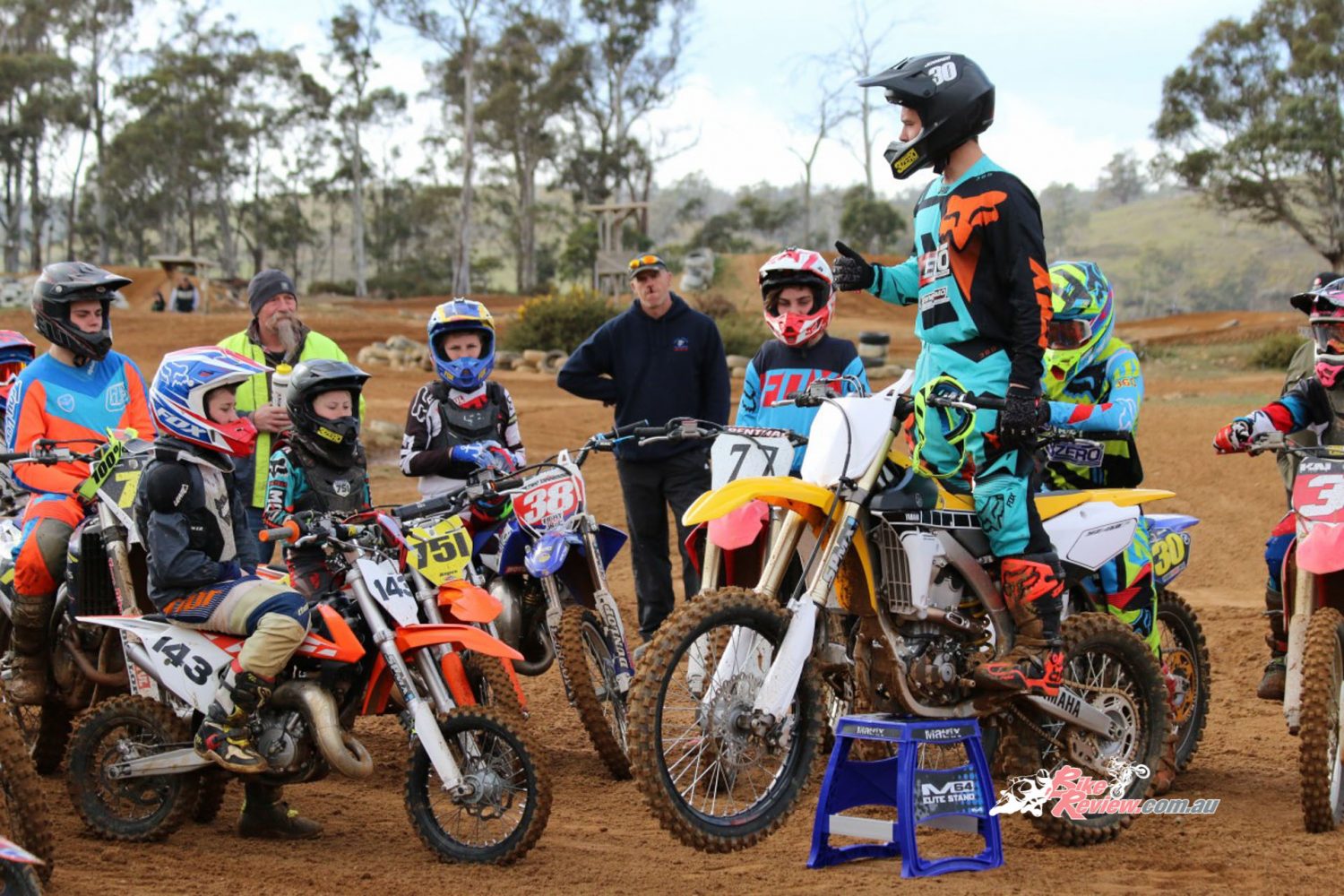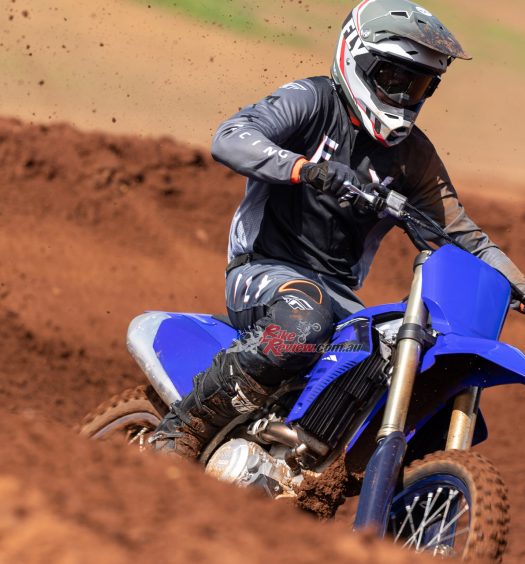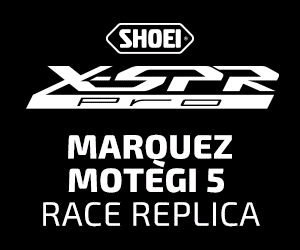Yamaha has a vast bank of knowledge when it comes to motocross coaching. Most states have their own coach in place to cater for riders of all levels and across all off road disciplines and Yamaha work with them to ensure they offer the best advice and tuition.

Yamaha are still actively involved in rider coaching and still want riders to enjoy riding dirt bikes in a safe manner.
What started out nearly 40 years ago with Stephen Gall running his local MX schools in NSW before taking it national and his University of Motocross programs, Yamaha are still actively involved in rider coaching and still want riders to enjoy riding dirt bikes in a safe manner.
Cameron Taylor, Shane Metcalfe, Jay Wilson, Jades Oates and Brody Jennings all run Yamaha supported and endorsed riding schools in various regions across Australia. Each of these guys have years of knowledge under their belts, collectively they are close to 100 years, and are more than happy to pass it on to the next generation. Each of these guys run riding schools all over the place and are passionate about safe dirt bike riding.
And all of them are heavily involved in Yamaha Junior Racing program’s and can often be seen working closely with riders on race day but are open to any level rider on any brand of bike.
With the slow-down in activity due to COVID-19, we cornered each of these guys to get their take on the coaching game and what they can do to assist you to become a better rider.

Metcalfe – ‘The basic techniques of controlling your dirt bike which in turn will make you a safer rider.’
What’s the most important thing you can teach a rider new to dirt bikes?
SM – The basic techniques of controlling your dirt bike which in turn will make you a safer rider. Learning to use your brakes, clutch and throttle are never ending and the better you are at them, the safer rider you will be.
JO – Above all else, a solid foundation in riding technique is essential to becoming a competent and safe rider and also listening to them and understanding their goals so I can help them achieve them.
BJ – Safety and key fundamentals are the two things I think every rider needs to learn and be aware of. Be skilled at riding your bike and be aware that it can be dangerous, and you need to be smart about how you approach things.
JW – The biggest thing we focus on at our school is the basics of riding a motorcycle and teaching the correct technique, to make sure we are creating safer and smarter riders. When a rider is wanting to take the next step forward with their riding we want to give them the correct tools to do it safely, so that when their speed increases they know how to manage it properly.
CT – Body position is key. Starting with a good position on the bike enables everything else to fall in place. Like anything, if the initial set up is wrong, it makes it hard to correct and keep your entire technique in place.

‘Being a current racer, I’m progressing with the techniques and skills that are currently being used and won with now…’
What do you offer at your riding schools?
SM – I try to cover as much as possible so everyone from the beginner to the advanced rider will learn something. We start as the basics from body position and bike control through to jumping and scrubbing to help every rider.
JO – I offer a wide range of coaching that covers everything from private one on one tuition through to a full and comprehensive live in style program that covers everything from on and off bike training, nutrition and mental conditioning.
BJ – I cover everything from beginner to advanced and we have a wide variety of riders in Tasmania so is something I constantly monitor. I can share my years of knowledge on riding and racing as well as being part of the industry to hopefully make someone’s motorcycle journey a fun and safe one.
JW – Being a current racer, I’m progressing with the techniques and skills that are currently being used and won with now. When I run a school I’m able to translate what I’m using myself while racing, I believe this is a massive benefit.
CT – I think the platform for any successful athlete is doing the basics well and training them so they become second nature to the rider. So, we work hard on things like body position and bike control at the start of our schools. I also enjoy working with a range of riders as it’s just as rewarding seeing a rider master something basic as it is to see a pro improve a lap time. With my years of experience, I can offer advice and mentoring for juniors to vets, club guys to pros.
What has been the biggest change in the way we ride our bikes?
SM – Now days, I see a lot of riders overlook technique for speed. A good technique will allow you to rider faster and also much safer instead of just holding it on and hope it all works out. I see a lot of technique missing from modern riders these days.
JO – For me, it’s been the progression in the way we use our body in riding the bike and the dynamic effect it has. We see riders now ride on the toes more frequently than their heels and we see riders using a far more aggressive technique in clutch and rpm as well as things like scrubbing.
BJ – I think the bikes themselves have played a huge part in how we ride these days. The performance level of the bike and then the amount of knowledge around it – from suspension to motor and then to coaching means riders can access it all easily and make gains quickly.
JW – I think the influence the US has on our riders. Australians have always looked to America and mimicked the way they ride. Honestly our tracks don’t allow us to ride that aggressively, so you are seeing riders looking more to Europe now and trying to mimic that style of riding. Standing on the pegs, lower RPMs and roll speed, allows us to be more efficient in the bike. Especially having raced Supercross in the US now, the way we need to ride here in Australia is completely different.
CT – Riding on the balls of our feet has changed the way we ride. When we were growing up, there was never any discussion about how to place your feet, only about grabbing the bike with your knees. Riding on your toes gives you a light and agile feel on the bike and allows more freedom as you work with the bike.
Can you see a young rider who has ‘it’?
SM – I think you can, if you know what you are looking for. You can identify talent and ability but that is only a small part of the equation. I saw Alex Larwood when he was on a 50 and thought he was talented but that didn’t mean he would be successful and still doesn’t. But I could see he had an ability to ride a bike well at a young age.
JO – 100% you can. That never means the rider is a sure thing and will have along and successful career and so many other factors come into it, but you can definitely see talent at a young age. I think the 15-18 year bracket is the hardest for a motocross rider and if they can maintain focus and work ethic through that period, changes are they will enjoy a good career.
BJ -Tough question. The answer is yes but you are never 100% sure. There are a few I work with that I think have the ability to go a long way in motocross but there are so many elements that make a champion.
JW – I think you can see as a rider develops they go through stages. Generally, under the age of 12, the rider who does well is often the one that rides the most and has access to land. From 12- 16 you can identify the talent and ability a rider has and how natural their technique is. Over the age of 17, it comes down to combining that talent with dedication and hard work as there is no-where to hide in a 30 minute moto.
CT – For sure you can. Not just in the way they ride but how they approach their riding and how they dissect a track. Not only to do they have a smooth and fluid style, they clearly think about their racing both on and off the track.
How do you deal with parents who think they have the next Chad Reed on their hands?
SM – Firstly, you remind them that everyone can be as good as Chad Reed if they have the work ethic, determination and are willing to make the sacrifices that he and his family did. But you also point out that while there has been a few guys that have come close, there has only been one Chad Reed in our sports history.
JO – I think an honest discussion between myself and the parent is vital here, so we are laying out realistic goals for the rider and the family. I’m massive for confidence in a rider and their supporters but their needs to be a realistic approach and reduce the pressure on the rider to live up to them. And also ensure the fun factor remains with both the rider and family.
BJ – Generally, these are the most passionate parents, just their energies are a little misplaced. I would go for a gentle conversation to bring them back down to earth and try and direct their energy in a positive fashion. If that doesn’t happen, generally the sport tends to weed them out.
JW – Everyone wants to be the next Chad Reed, don’t they? I encourage them to have those goals and dreams but also know that Chad is a once in a lifetime rider who devoted everything he had to become what he did. So, chase those goals, but never lose sight of why you started, the enjoyment and fun factor should always stay with you.
CT – Carefully! I have been a bit too brutal and honest at times and you never want to crush anyone’s dreams or hopes so you have to get a good understanding of what it is they want for the child or from the sport.
Can an over 40 year old with a Dad bod and five year old bike still gain something from going to a riding school?
SM – They sure can! Everyone can learn something from a riding school and in fact I continue to learn more from a lot of the schools I do. If you have an open mind and are willing to take on advice, then there is always something to gain.
JO – 100% they can. We have had riders from all ages and skill level say they have gained something from our schools.
BJ – Yes. No question things can be learned and for a lot of those 40 year old’s, it can also be a good time to spend with your child in a shared passion. Riding with my son is amazing and be at a school together would be a great way to spend time with each other.
JW – Absolutely, in fact we have done schools in regional and rural areas where farmers have come along. Riding bikes on properties is part of their day and if they can do it better, then of course it’s worth it. I’m just as happy to work with a guy on his AG bike rounding up the cows if my advice can make his life a little safer and easier.
CT – I have had 60 year old riders at our riding days and they have as got much from it as the younger guys. Most of the older riders grew up when there was very little coaching, so they have years of bad habits and dated techniques. By the end of the day, they have adapted and found a better way to ride and general are both safer and faster.

‘Everyone can be as good as Chad Reed if they have the work ethic, determination and are willing to make the sacrifices…’
How can people contact you regarding coaching?
SM – Via my website is the best way; sm25coaching.com
JO – I can be contacted via my social media or website; oatesmx.com.au
BJ – Social media channels work best for me; Facebook and Instagram.
JW – I’m available through social media- both personal and Hastie Co.
CT – Call me, hit me up on social media or www.camerontaylormx.com
























